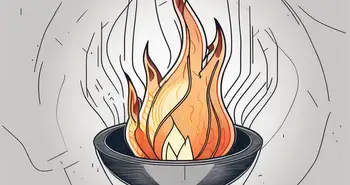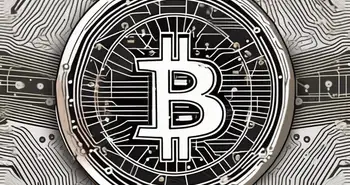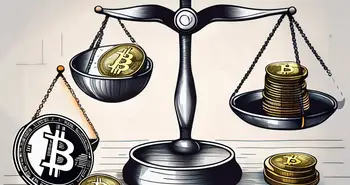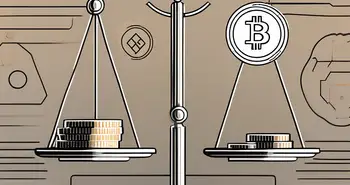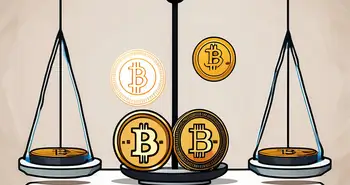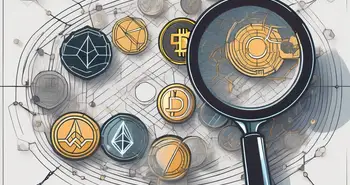Coin Burn Explained: How It Impacts Cryptocurrency Value and Supply
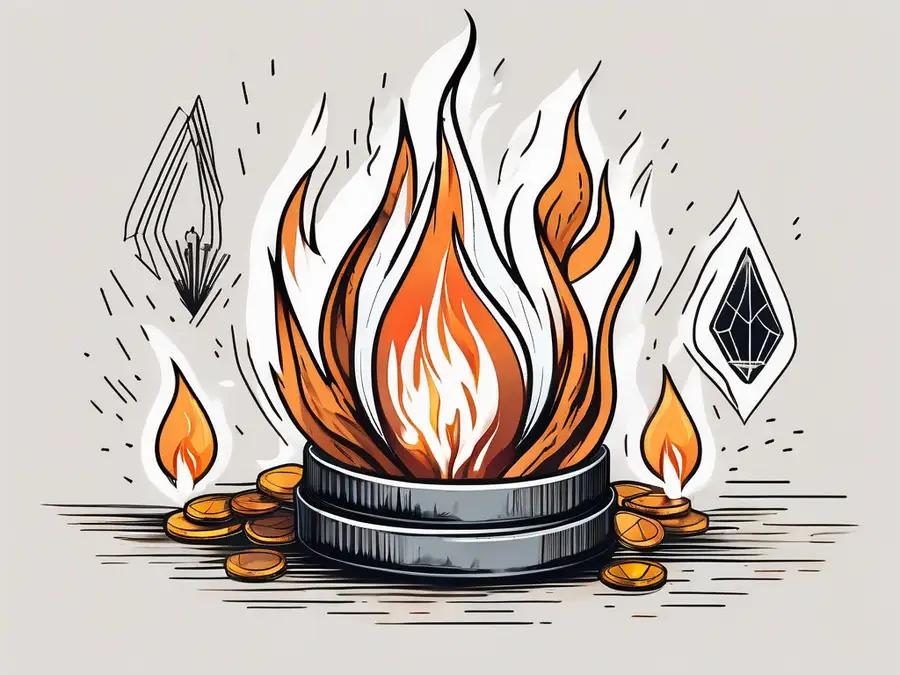
As an expert in the field of cryptocurrency, I am here to provide you with the ultimate guide to coin burn. Whether you are a casual observer or a seasoned investor, understanding the basics of coin burn is essential to navigating the world of cryptocurrencies. In this comprehensive article, we will dive deep into the definition, purpose, process, and impact of coin burn. We will also explore the different approaches to coin burn and discuss the risks and controversies surrounding it. By the end, you will have all the knowledge you need to make informed decisions in this rapidly evolving landscape.
Understanding the Basics of Coin Burn
Definition and Purpose of Coin Burn
Coin burn, also known as token burning, is the process of permanently removing a certain amount of cryptocurrency tokens from circulation. This reduction in the total supply of tokens is typically done by sending them to an unspendable address or smart contract, ensuring that they can never be accessed again. The primary purpose behind coin burn is to increase the scarcity and value of the remaining tokens.
Let me share a personal story to illustrate the significance of coin burn. A few years ago, I invested in a relatively unknown cryptocurrency that had recently initiated a coin burn. At the time, the project seemed promising, but it was struggling to gain traction. However, the decision to burn a significant portion of their tokens instantly created buzz in the crypto community, leading to increased investor confidence and a subsequent surge in the token's value. This experience taught me firsthand how coin burn can have a profound impact on the fortunes of a cryptocurrency.
The Process of Coin Burning
The process of coin burning varies depending on the cryptocurrency project and the underlying blockchain technology. Typically, it involves a transparent announcement by the project team, stating the number of tokens to be burned and the method they will employ. Once the parameters are established, the tokens are sent to an address or smart contract that renders them permanently unspendable.
It is important to note that coin burn can be done manually, through a community consensus mechanism, or through an automated process utilizing smart contracts. The method chosen depends on the project's specific goals and the level of decentralization desired.
Key Terminology in Coin Burn
Before we delve further into the topic of coin burn, let's familiarize ourselves with some key terms that you are likely to encounter frequently.
- Circulating Supply: This refers to the number of tokens available in the market and actively in circulation.
- Total Supply: The total supply represents the maximum number of tokens that can ever exist for a particular cryptocurrency project.
- Burned Supply: The burned supply refers to the number of tokens that have been permanently removed from circulation through the coin burn process.
- Market Capitalization: Market capitalization is calculated by multiplying the coin's price by its circulating supply, representing the total value of the cryptocurrency in the market.
The Impact of Coin Burn on Cryptocurrency Value
Coin Burn and Market Capitalization
One of the primary ways in which coin burn can impact a cryptocurrency's value is through its effect on market capitalization. By reducing the circulating supply of tokens, coin burn effectively increases the scarcity of the remaining tokens. As a result, if the demand for the cryptocurrency remains constant or increases, the decreased supply can drive up the token's price, leading to a surge in market capitalization.
Imagine a scenario where a cryptocurrency project decides to burn a significant portion of its supply. This sharp reduction in available tokens can create a sense of urgency among investors, leading to increased buying pressure and a subsequent rise in price. This phenomenon has been observed in various projects, causing a substantial boost in their market capitalization.
Coin Burn and Token Scarcity
Token scarcity is a crucial aspect of any cryptocurrency's value proposition. By reducing the supply of tokens through coin burn, projects can create a sense of scarcity and exclusivity, which can be highly appealing to potential investors. As a limited resource, tokens that have been burned become increasingly valuable, as there are fewer in circulation.
For example, consider a cryptocurrency project that has a total supply of one billion tokens. If 500 million tokens are burned, the remaining supply becomes scarcer. This scarcity can drive up the token's value by increasing demand, as investors seek to acquire a piece of the limited supply.
Coin Burn and Investor Confidence
Coin burn can significantly impact investor confidence in a cryptocurrency project. When a project announces a coin burn, it demonstrates a commitment to reducing the token supply and increasing its value. This act sends a positive signal to the community and potential investors, showcasing the project's active measures to improve token economics.
Moreover, coin burn can also be viewed as a mechanism to reward existing token holders. By reducing the supply of tokens, those who hold onto their tokens often see an increase in their value. This, in turn, fosters trust and loyalty among the community, contributing to overall investor confidence in the project's long-term viability.
Different Approaches to Coin Burn
Scheduled Coin Burns
Some cryptocurrency projects opt for scheduled coin burns as part of their token distribution strategy. They outline a predetermined schedule, often specified in their whitepaper or project roadmap, where a certain percentage of tokens will be burned at regular intervals. This approach provides transparency and predictability, allowing the community to anticipate and prepare for these events.
One notable example of scheduled coin burns is Binance's native token, BNB. Binance commits to quarterly token burns, where they use a portion of their profits to buy back BNB from the market and burn them. This approach has been well-received by the community, as it serves both the purpose of enhancing token economics and rewarding BNB holders.
Unscheduled Coin Burns
In contrast to scheduled coin burns, unscheduled coin burns are conducted sporadically or in response to specific events. These burns are often triggered by milestones achieved by the project or major developments within the ecosystem. Unscheduled burns can generate excitement and create an element of surprise within the community, leading to increased market activity and potential price surges.
An example of an unscheduled coin burn occurred when Tron founder, Justin Sun, announced a surprise burn of one billion TRX tokens as a celebration of the project's one-year anniversary. This unexpected move garnered significant attention and boosted investor sentiment, propelling TRX to new highs.
Buyback and Burn Strategy
Another strategy employed by some cryptocurrency projects is the buyback and burn model. In this approach, the project team utilizes a portion of their profits to buy back tokens from the market. These tokens are subsequently burned, effectively reducing the supply and increasing the value of the remaining tokens.
A prominent example of the buyback and burn strategy is Huobi Token (HT). Huobi, one of the largest cryptocurrency exchanges, commits a certain percentage of its quarterly revenue to repurchasing HT tokens from the market. These repurchased tokens are then burned. This strategy not only enhances token economics but also incentivizes users to hold HT as they have a vested interest in the exchange's success.
Risks and Controversies Surrounding Coin Burn
Potential for Market Manipulation
While coin burn can have positive effects on a cryptocurrency's value, it is not without its risks. In some cases, projects may resort to coin burn as a means to manipulate the market. By artificially reducing the token supply, they may create a false sense of scarcity and induce FOMO (fear of missing out) among investors.
Therefore, it is essential to approach coin burns with caution and thoroughly research the underlying motivations and intentions of the project. Assessing the project's credibility, transparency, and adherence to regulatory guidelines can help identify legitimate use cases of coin burn versus potential market manipulation.
Regulatory Concerns and Legal Issues
Coin burn can also present regulatory and legal challenges for cryptocurrency projects. As the industry continues to evolve and governments worldwide establish frameworks for digital assets, projects must ensure compliance with relevant laws and regulations. This includes transparency in their token burn activities and proper disclosure of their intentions to avoid any violations.
Legal clarity regarding coin burn is still evolving, and different jurisdictions may have varying perspectives on its legality. Therefore, investors and projects must navigate these complexities responsibly to avoid potential legal repercussions.
Risks for Investors
While coin burn can be beneficial for token holders, it is important to acknowledge the potential risks involved. Token burning does not guarantee a rise in the token's value or guaranteed returns. The market dynamics and overall demand for the cryptocurrency play a significant role in determining its value.
Investors need to assess the fundamentals of a project beyond just the coin burn mechanism. Factors such as the project team's expertise, the technology's viability, and the market demand for the project's services should be considered before making investment decisions.
Frequently Asked Questions (FAQ)
- What is coin burn? Coin burn is the process of permanently removing a certain amount of cryptocurrency tokens from circulation to increase token scarcity and value.
- How does coin burn affect a cryptocurrency's value? Coin burn can impact a cryptocurrency's value by increasing market capitalization, creating token scarcity, and enhancing investor confidence.
- What are scheduled coin burns? Scheduled coin burns are preplanned events where a certain percentage of tokens are burned at regular intervals.
- Why do projects opt for unscheduled coin burns? Unscheduled coin burns are often used to celebrate milestones or trigger excitement in the community, driving market activity.
- What is the buyback and burn strategy? The buyback and burn strategy involves using project profits to buy back tokens from the market, which are then burned to increase token value.
In conclusion, coin burn has become an integral part of the cryptocurrency ecosystem, providing several benefits while carrying inherent risks. Understanding the basics, impact, different approaches, and associated risks of coin burn is essential for anyone navigating the crypto world. By staying informed and critically analyzing projects, you can make better investment decisions and navigate the evolving landscape with confidence.
Now that you're equipped with the knowledge of coin burn and its significance in the crypto market, take your trading to the next level with Morpher. As a platform that's reshaping the investment landscape through blockchain innovation, Morpher offers you the ability to trade a wide array of assets, including cryptocurrencies, without the burden of fees or liquidity constraints. Embrace the power of fractional investing, short selling, and up to 10x leverage to enhance your investment strategies. Plus, with the Morpher Wallet, you maintain complete control over your funds. Ready to dive into a unique trading experience with Morpher? Sign Up and Get Your Free Sign Up Bonus today and join the future of trading.

Disclaimer: All investments involve risk, and the past performance of a security, industry, sector, market, financial product, trading strategy, or individual’s trading does not guarantee future results or returns. Investors are fully responsible for any investment decisions they make. Such decisions should be based solely on an evaluation of their financial circumstances, investment objectives, risk tolerance, and liquidity needs. This post does not constitute investment advice.

Painless trading for everyone
Hundreds of markets all in one place - Apple, Bitcoin, Gold, Watches, NFTs, Sneakers and so much more.

Painless trading for everyone
Hundreds of markets all in one place - Apple, Bitcoin, Gold, Watches, NFTs, Sneakers and so much more.

